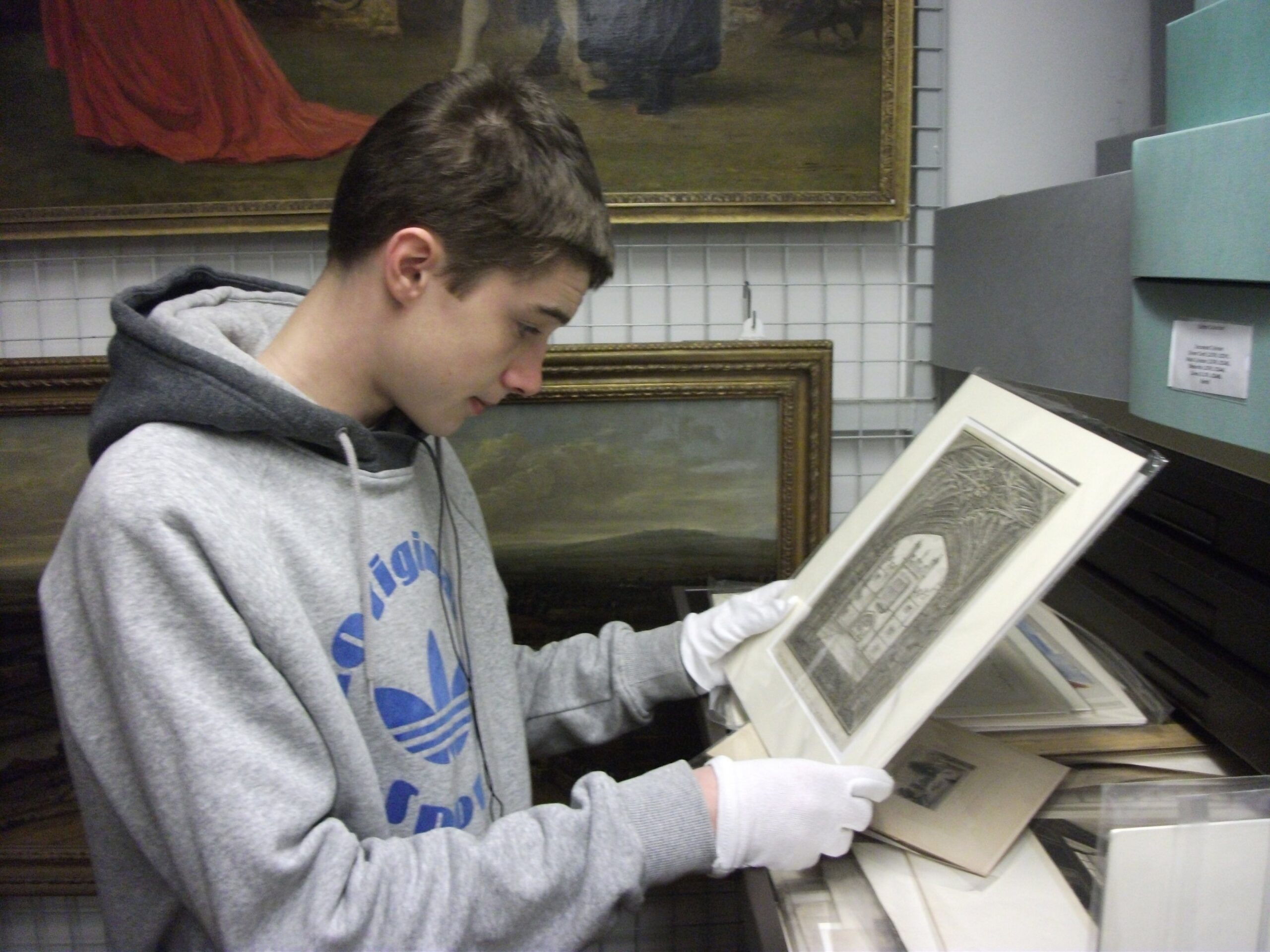
A volunteer working in the collections section at the Orleans House Gallery
Respect and reward
Community members and arts and heritage organisations can all benefit from volunteering if some basic principles are followed. Abigail Kay explains what good practice looks like.
When I glance down a list of volunteering opportunities on websites like Do It or CharityJob, I am always struck by the sheer variety of roles available. Volunteering within the arts and heritage sectors allows both individuals and organisations to benefit from a range of skills development and networking opportunities, with roles from front of house and outreach through to finance and administration.
Mutual and ongoing value, however, can only be delivered when proper investment is made into managing and supporting the volunteers according to recognised principles of good practice. Employment within the arts and heritage sectors is notoriously competitive, with a strong expectation that people will build up voluntary experience before finding paid employment. There is no shortage of willing and enthusiastic individuals who want to get involved, and this is of enormous benefit to organisations seeking to involve volunteers. It is important though that volunteer-involving organisations keep constantly in mind that their volunteers expect to be helped to develop their own careers and skills, whether they intend to remain in the sector in the long term or not. The more opportunities that organisations can provide for professional development and training alongside the voluntary role, as well as opportunities to gain experience in particular areas of interest, the more the volunteers will benefit and the greater the return on investment for the organisation itself will be.
The gallery offers volunteering placements of a fixed length which provide volunteers with significant responsibilities and a chance to develop essential skills
Orleans House Gallery, the principle art gallery for the Borough of Richmond upon Thames, has a large volunteering programme in both education and front-of-house roles. The volunteers involved in education roles, which includes everything from conducting research to delivering workshops, tend primarily to be university students or recent graduates aspiring towards a career in the arts. In recognition of this, the gallery offers volunteering placements of a fixed length that provide volunteers with significant responsibilities and a chance to develop essential skills. The gallery has been leading a project called ‘Partnership for Excellence West London: Volunteering’ funded by Arts Council England, which works in partnership with ten other heritage sites to increase volunteer capacity. This has included providing training and networking opportunities for volunteers so that they can develop areas of interest, such as promoting equality and diversity and working with people with mental health problems. These training opportunities are available within the education placements and to front-of-house volunteers alike, and provide a way to encourage retention and prioritise personal development.
With so many eager volunteers available, and ongoing pressures on funding for the arts, there is a real need for organisations to remain vigilant to the risk of substituting paid roles for volunteers. Volunteers have an essential role within arts and heritage organisations, and if involved appropriately, they stand to benefit greatly from the time they give. Volunteer-involving organisations need to be clear about the exact nature of the value which bringing in volunteers will deliver. It would not be appropriate, for example, to introduce volunteers to carry out tasks that had previously been carried out by paid members of staff, if the purpose is simply to make a financial saving. Any organisation facing such a scenario should think carefully about why it is involving volunteers and how they would be adding value. The KnowHow NonProfit website offers guidance on this topic, including what the benefits of involving volunteers can be if managed effectively and the processes an organisation should go through before involving volunteers.
A final consideration is one which echoes the ethos of the arts and heritage sectors themselves. It is hard to imagine the arts without its deep-rooted creativity, which relies on input from as wide and diverse a group of people as possible. The same can be said for a volunteering programme. Each volunteer has something very different to bring, and volunteer-involving organisations only stand to benefit from tapping into that creativity by recruiting volunteers who reflect as much diversity as possible. A great way to do this is to increase the flexibility of the programme, by broadening the range of roles available and accommodating volunteers’ existing time commitments such as childcare or employment.
Another method for increasing diversity is to reach out into the local area. As well as providing volunteer management support, local volunteer centres offer recruitment and brokerage facilities. This can help arts and heritage organisations reflect the demographics of their neighbourhood or region, and then gain enormous benefit from the local knowledge and connections that brings. Orleans House Gallery has employed a slightly different method: through its partnerships it is able to work with other heritage sites to build connections between volunteers across west London. While the majority of volunteers remain with their primary organisation, there is more ease for linking between the sites, and when one site has a particular need for a large number of volunteers, there is a diverse pool of willing volunteers available.
In order to provide the best possible experience for arts and heritage volunteers, and for volunteer-involving organisations to receive the greatest return on investment in them, read the nine indicators that make up the Investing in Volunteers scheme, a nationally recognised quality mark.
Abigail Kay is Trainee Volunteering Policy Officer for the National Council for Voluntary Organisations.
www.ncvo.org.uk
Join the Discussion
You must be logged in to post a comment.